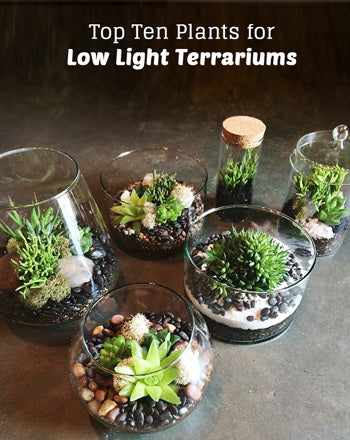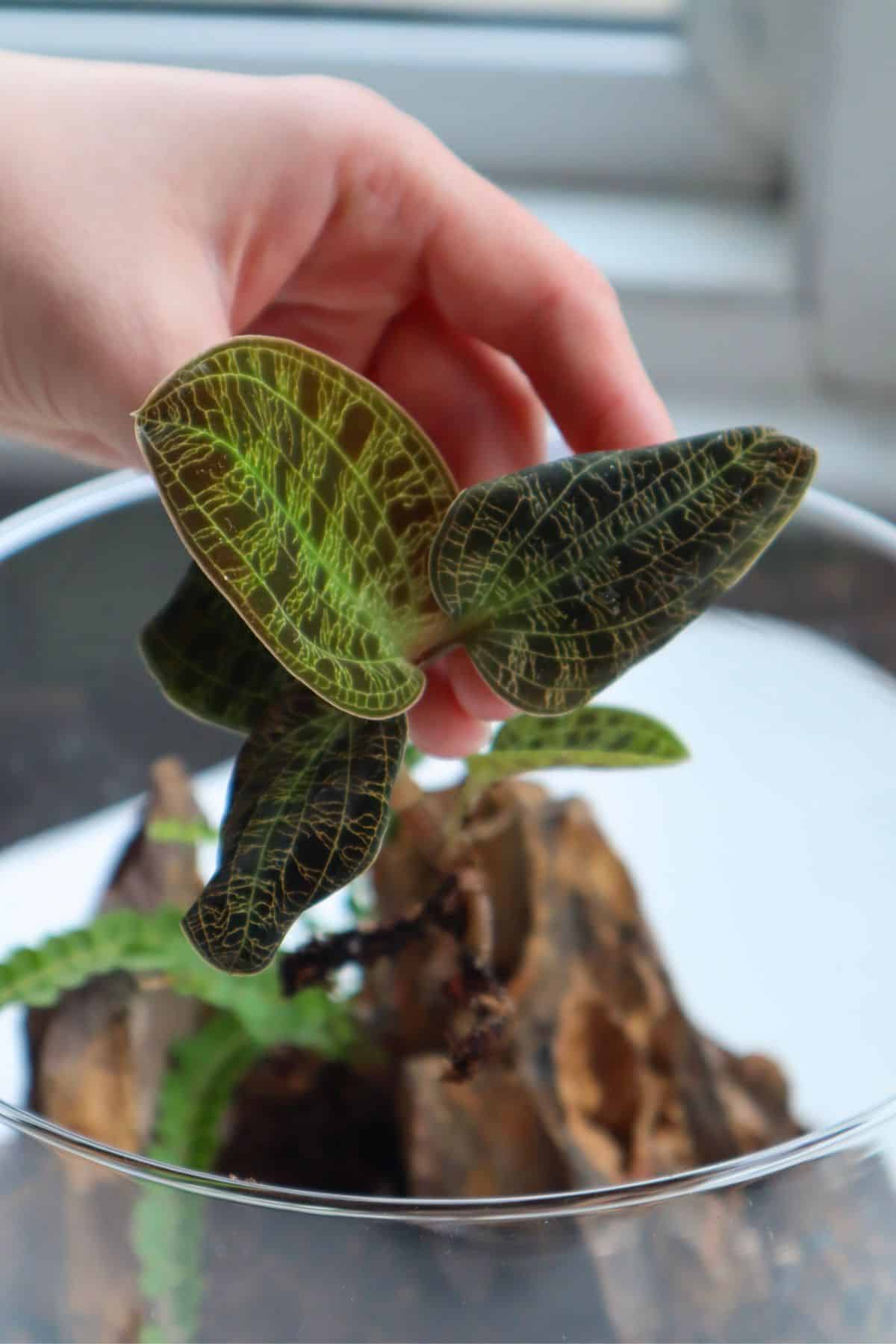Low light terrarium plants thrive in minimal sunlight and are perfect for indoor settings. They require less maintenance and add greenery to small spaces.
Terrariums are a fantastic way to bring nature indoors, especially when space or sunlight is limited. Low light terrarium plants are specifically adapted to survive with minimal light, making them ideal for apartments, offices, or rooms with few windows. These plants not only enhance the aesthetic appeal but also improve air quality.
Popular choices include ferns, mosses, and certain succulents. They are easy to care for and require little attention, making them perfect for busy individuals. By choosing the right plants, you can create a lush, green environment that thrives in low light conditions.
Introduction To Low Light Terrarium Plants
Low light terrarium plants are perfect for indoor gardens. These plants thrive in minimal light. They are easy to care for and add beauty. With these plants, you can enjoy nature indoors.
Benefits Of Low Light Plants
- Easy Maintenance: Low light plants need less care.
- Improved Air Quality: They clean the air around you.
- Space Savers: These plants fit in small spaces.
Common Myths
| Myth | Reality |
|---|---|
| Low light plants don’t grow well | They grow fine with minimal light. |
| They need no light at all | They still need some light. |
| Only certain plants can survive | Many types thrive in low light. |
Choosing The Right Plants
Picking the right plants for a low light terrarium can be tricky. You need plants that thrive with minimal light. The right choice ensures your terrarium remains lush and beautiful. Below, we will discuss the best plant varieties and the factors to consider.
Best Plant Varieties
Some plants are perfect for low light terrariums. Here are the top choices:
- Ferns: They love shady spots and add a tropical feel.
- Mosses: These tiny plants can grow in very low light.
- Pothos: Their trailing vines look great in any terrarium.
- Philodendrons: These are easy to care for and love low light.
- Spider Plants: They are hardy and can survive in dim conditions.
Factors To Consider
When selecting plants, consider these factors:
| Factor | Details |
|---|---|
| Light Requirements | Choose plants that thrive in low light conditions. |
| Humidity Levels | Ensure the plants can handle the terrarium’s humidity. |
| Size | Pick plants that fit well in the terrarium space. |
| Growth Rate | Consider how fast the plants will grow. |
These factors help in maintaining a healthy and beautiful terrarium. Choose wisely to enjoy a thriving green space.
Plant Care Essentials
Keeping low light terrarium plants healthy requires specific care. Understanding watering, soil, and fertilizer needs is crucial.
Watering Tips
Proper watering is vital for low light terrarium plants. Overwatering can cause root rot. Underwatering leads to dry, unhealthy plants.
- Check soil moisture regularly.
- Water only when the topsoil feels dry.
- Use a spray bottle for gentle watering.
- Avoid waterlogging the soil.
- Ensure proper drainage in the terrarium.
Soil And Fertilizer
Choosing the right soil mix is essential for plant health. Low light plants thrive in well-draining soil.
| Soil Type | Characteristics |
|---|---|
| Cactus Mix | Well-draining, prevents root rot. |
| Peat Moss | Retains moisture, provides nutrients. |
| Perlite | Improves soil aeration. |
Fertilizing is equally important but should be done sparingly. Over-fertilizing can harm the plants.
- Use a balanced, water-soluble fertilizer.
- Fertilize once a month during the growing season.
- Reduce or stop fertilizing in winter.
By following these tips, your low light terrarium plants will thrive.

Credit: pistilsnursery.com
Lighting Requirements
Low light terrarium plants thrive in minimal light conditions. Understanding their lighting needs ensures their growth and health. Let’s explore the best light sources for these plants.
Natural Light Sources
Natural light is beneficial for low light terrarium plants. Place the terrarium near a north-facing window. This provides indirect sunlight, perfect for these plants. Direct sunlight can harm them. Use sheer curtains to diffuse light if needed.
Artificial Lighting Options
Artificial lighting is essential for rooms with no natural light. Here are some options:
- Fluorescent Lights: These are energy-efficient and provide the right spectrum.
- LED Grow Lights: They offer customizable light spectra and are long-lasting.
- Incandescent Bulbs: These are less efficient and produce more heat.
Place artificial lights 6-12 inches above the terrarium. Use a timer to mimic a natural light cycle. Aim for 12-14 hours of light daily.
| Light Source | Pros | Cons |
|---|---|---|
| Fluorescent Lights | Energy-efficient, Right spectrum | Can be bulky |
| LED Grow Lights | Customizable, Long-lasting | Higher upfront cost |
| Incandescent Bulbs | Easy to find | Less efficient, More heat |
Choose the best option based on your terrarium’s needs and your budget. Proper lighting ensures your low light terrarium plants thrive and flourish.
Humidity And Temperature
Ensuring the right humidity and temperature is crucial for low light terrarium plants. These factors influence plant growth and health. Let’s explore how to maintain optimal conditions.
Maintaining Humidity
Low light terrarium plants need consistent humidity levels. Dry air can harm these plants.
- Mist the terrarium regularly.
- Use a humidity tray.
- Cover the terrarium to retain moisture.
Place a shallow dish with water inside. This will help increase humidity. Also, group plants together to create a humid microclimate.
Ideal Temperature Range
Temperature plays a vital role in plant health. Keep the terrarium in the right range.
| Plant Type | Temperature Range |
|---|---|
| Tropical Plants | 65-75°F (18-24°C) |
| Ferns | 60-75°F (16-24°C) |
| Mosses | 55-70°F (13-21°C) |
Avoid placing the terrarium near heat sources. This can cause overheating. Also, keep it away from drafty windows. Sudden temperature changes can shock the plants.
Common Pests And Diseases
Low light terrarium plants are generally easy to care for. However, they are not immune to pests and diseases. Identifying issues early and taking preventative measures will ensure your plants thrive.
Identifying Issues
Pests and diseases can stunt growth and damage leaves. Look for these signs:
- Yellowing leaves: This could indicate spider mites.
- White powdery spots: This is a sign of powdery mildew.
- Sticky residue: Aphids often leave a sticky substance.
- Black spots: Fungal infections can cause dark spots.
| Pest/Disease | Signs |
|---|---|
| Spider Mites | Yellowing leaves, webbing |
| Powdery Mildew | White powdery spots |
| Aphids | Sticky residue, curled leaves |
| Fungal Infections | Black spots, mold |
Preventative Measures
Taking steps to prevent pests and diseases is crucial. Here are some tips:
- Regularly inspect your plants: Check for signs of pests and diseases weekly.
- Maintain proper humidity: Keep humidity levels stable to avoid mildew.
- Avoid overwatering: Overwatering can cause fungal issues. Water only when soil is dry.
- Clean terrarium: Regularly clean the terrarium to remove debris and dead leaves.
- Isolate new plants: Quarantine new plants for a week before adding them.
Following these steps will help keep your terrarium healthy and pest-free.
Decorating Your Terrarium
Creating a stunning terrarium is both fun and rewarding. A well-decorated terrarium not only looks beautiful but also promotes healthy plant growth. Follow these simple guidelines to make your terrarium a masterpiece.
Design Ideas
Start with a theme for your terrarium. Themes can guide your design choices and make the terrarium look cohesive. Popular themes include tropical, desert, and forest. Pick plants that fit your chosen theme.
- Tropical Theme: Use ferns, moss, and small orchids.
- Desert Theme: Choose succulents and cacti.
- Forest Theme: Opt for ferns and small shrubs.
Think about the arrangement. Place taller plants in the back and shorter ones in the front. Use rocks and wood pieces to create levels and depth. This makes the terrarium look more natural and interesting.
Incorporating Accessories
Accessories add charm and personality to your terrarium. Consider adding small figurines, miniature furniture, or tiny fairy garden items. These accessories can match the theme of your terrarium.
| Accessory | Theme |
|---|---|
| Miniature Animals | Forest or Tropical |
| Fairy Houses | Forest |
| Sand and Pebbles | Desert |
Lighting is another key accessory. Use LED lights to highlight certain areas. This can make your terrarium sparkle, especially in low light.
Lastly, add natural elements like small branches, stones, and shells. These can enhance the overall look and make your terrarium unique.

Credit: pistilsnursery.com
Troubleshooting And Tips
Keeping low light terrarium plants healthy can be tricky. Here are some troubleshooting tips and long-term maintenance advice to help your plants thrive.
Reviving Struggling Plants
Sometimes plants in low light terrariums struggle. Here are steps to revive them:
- Check the soil moisture: Ensure the soil is not too wet or too dry.
- Adjust lighting: Move the terrarium to a brighter spot if needed.
- Trim dead leaves: Remove any brown or yellow leaves to promote new growth.
- Inspect for pests: Look for tiny bugs and treat with neem oil if necessary.
Long-term Maintenance
Maintaining your low light terrarium plants over time ensures their health and beauty. Follow these tips:
- Watering Schedule: Water your plants regularly but avoid overwatering.
- Fertilizing: Use a diluted fertilizer once a month.
- Cleaning: Wipe the glass of your terrarium to keep it clear.
- Monitoring Growth: Trim and shape your plants to fit the terrarium.
Below is a quick-reference table for common issues and solutions:
| Issue | Solution |
|---|---|
| Yellow Leaves | Reduce watering frequency |
| Stunted Growth | Increase light exposure |
| Wilting | Check for pests and adjust watering |

Credit: terrariumtribe.com
Conclusion
Creating a low light terrarium is both fun and rewarding. Choose the right plants for success. These plants thrive in minimal light and require low maintenance. Perfect for busy lifestyles, they add greenery to any space. Start your terrarium journey today with these resilient, beautiful options.
Enjoy your new indoor oasis!
